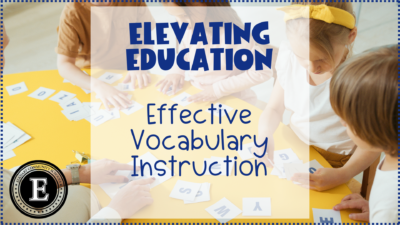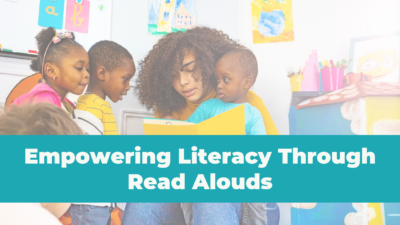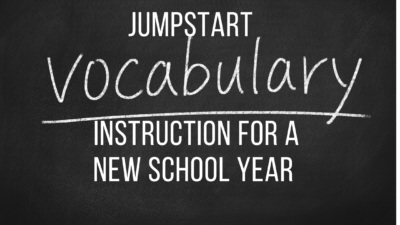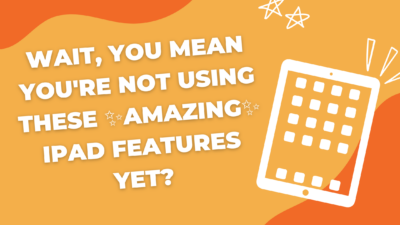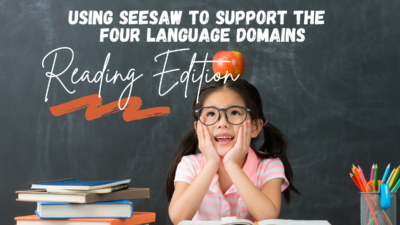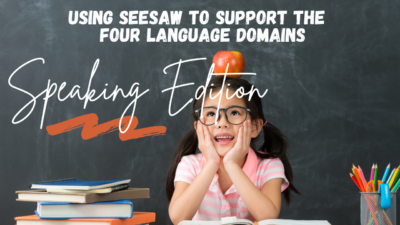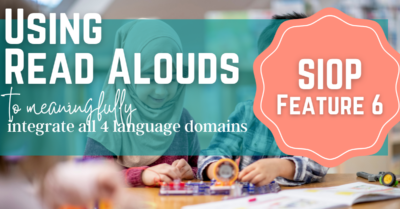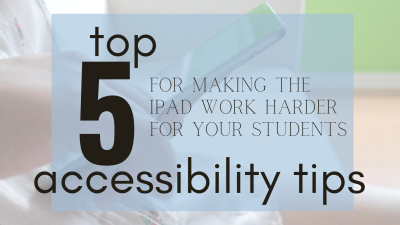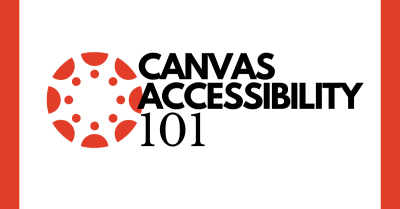Accessibility
Elevating Education: Effective Vocabulary Instruction
Let’s delve into a topic that lies at the heart of effective teaching: vocabulary instruction. We all understand its importance—it’s essential for comprehension, expression, and critical thinking. But how do we ensure our instruction isn’t just about exposure but truly facilitates understanding and retention? In this post, we’re taking a deep dive into the art and science of vocabulary teaching. We’ll explore evidence-based strategies, practical methodologies, and insights to enhance your instructional practices. Why Vocabulary Instruction? Teaching vocabulary is essential for fostering academic success and narrowing the pervasive vocabulary gap observed among students. Research indicates stark differences in vocabulary knowledge...
Empowering Literacy Through Read Alouds
If you are connected anywhere to early literacy education right now, I am sure you are aware of the national conversation around aligning current practice to the science of reading. But what is the science of reading and how can it make our students better readers? I am by no means an expert, but have picked up some helpful resources along my learning journey to hopefully help you with the shift you are making in your classroom when you read aloud to students. Reading for Understanding One main aspect behind the science of reading is the idea that reading comprehension...
Jumpstart Vocabulary Instruction for a New School Year
Language proficiency lies at the heart of effective communication and academic success, and educators are constantly seeking innovative ways to enhance students’ language skills. Understanding the significance of engaging with new words across all four language domains – reading, writing, speaking, and listening – has been a cornerstone of language instruction, as highlighted in SIOP training. In this article, we explore how Seesaw templates leverage Seesaw’s new frames to empower students to respond using all language domains, fostering comprehensive language development. Additionally, we delve into two exciting techniques to gamify vocabulary acquisition and deepen word understanding through word webs. Join...
Supporting English Language Learners by Integrating Digital Content with Discovery Education
As a teacher, one of the biggest challenges you may face is finding ways to support English Language Learners in your classroom. While it can be difficult to meet the diverse needs of these students, one powerful resource that you may want to consider is Discovery Education. Discovery Education is an online platform that provides a wealth of resources and tools to support students’ learning. This platform can be particularly helpful for our EL population, as it offers a range of features that can help build background knowledge, support vocabulary development, and strategies to help students meet content objectives. Building...
Wait, you mean you’re not using these ✨amazing✨ iPad features yet?
The iPad has some awesome features you may didn’t know even existed! Annotating within safari reader, powerful accessibility features, Apple Classroom hidden features, the split screen superpower, and upgrading your home screen with widgets.
Using Seesaw to Support the Four Language Domains: Writing Edition
Seesaw is an amazing place to include student writing. When thinking about writing lessons, we need to keep in mind that writing involves not only putting thoughts and ideas into words in written form, but also knowing & using the appropriate vocabulary, spelling, and grammar to convey meaning, knowing and using the appropriate form for the type of writing, and the difference between formal and informal writing. It also includes the skills of revising, editing, and publishing.
Using Seesaw to Support the Four Language Domains: Reading Edition
The language domains, listening, speaking, reading, and writing, are the 4 ways that people can interact with language. Two of these skills, speaking and writing, are described as productive skills as we create language with each of these. The other two skills, listening and reading, are receptive skills because we use these skills to receive information from an outside source. In this post, we will focus on ways that you can practice the language domain of reading by using Seesaw.
Using Seesaw to Support the Four Language Domains: Speaking Edition
The language domains, listening, speaking, reading, and writing, are the 4 ways that people can interact with language. Two of these skills, speaking and writing, are described as productive skills as we create language with each of these. The other two skills, listening and reading, are receptive skills because we use these skills to receive information from an outside source. In this post, we will focus on practicing the language domain of speaking and how Seesaw can help you meet this need.
Using Read Alouds to Meaningfully Integrate All 4 Language Domains
Earlier this week I stumbled upon a podcast called Equipping ELL’s with Beth Vaucher. One episode that really caught my attention was “4 Ways to Easily Cover All 4 Domains Through a Read Aloud”. Beth walks through how to actively engage your students in all four of the language domains using just one read aloud. This post is based on the ideas that she shared in her podcast. Check out this episode, below! Why Use Read Alouds There are many evidence-based benefits of reading aloud to students. Reading aloud creates a classroom community by establishing a text known by the entire...
Bringing High-level Content to Lower Readability Levels
Ensuring all students are successful at learning content in your classroom starts with lesson preparation. The SIOP component of Lesson Preparation sets the tone for the entire SIOP framework. In this blog post, we will highlight two features of lesson preparation: choosing appropriate content concepts for both age and educational backgrounds and adapting content to all levels of student proficiency, and look at how these two features work hand in hand and when planned for effectively, can change the trajectory of your classroom. In specific, we will focus on different methods you can use to adapt texts so that you...
Top 5 Accessibility Tips for the iPad
What I truly love about Apple and the iPad is their dedication to accessibility. (You can learn more, here). Below I present to you my top 5 iPad accessibility tips for the iPad! Tip #1: Enable dictation (it isn’t cheating) Dictation allows students to use the microphone to use their voice to type. This is POWERFUL for many students, and while it may feel a bit like cheating, I promise you that it isn’t. To turn on dictation, Settings > Keyboards > Enable dictation towards the bottom. Tip #2: Speak Screen and Speak Selection (this also isn’t cheating) Speak Selection...
Canvas Accessibility 101
Homepage You should be meeting the following requirements to ensure your homepage is accessible. Translated Text Fonts that are readable (avoid cursive or anything that looks cursive) Visual icons Below are two customizable homepages you can use and edit for your own class. There is a horizontal calendar option and a vertical calendar option. Click on the links for the canvas course to copy it in your course. Canvas Horizontal Calendar Homepage Canvas Vertical Calendar Homepage Common Icons I recommend starting the year with an intro and a key of common icons you use in your classroom, see example above....
Safe and Flexible Schoolwide Messaging with Seesaw
Seesaw has updated their messaging! You can now add more than one person to a message, including students, other teachers in your building, and parents. Read on to learn more!
